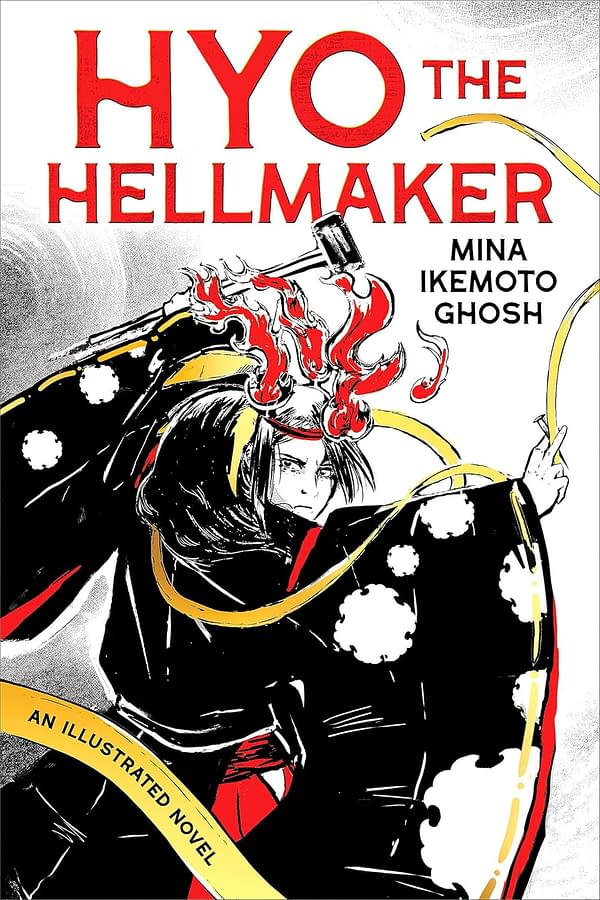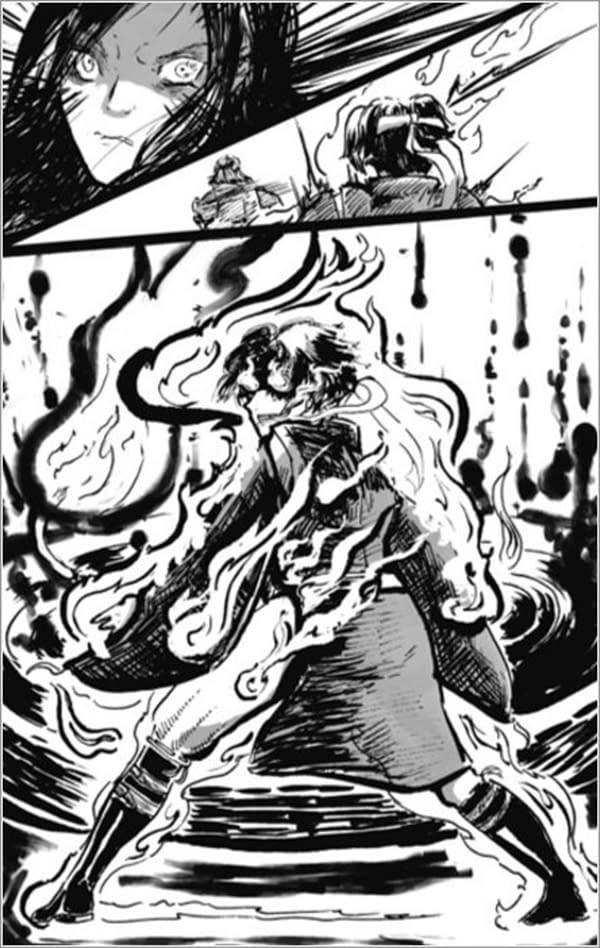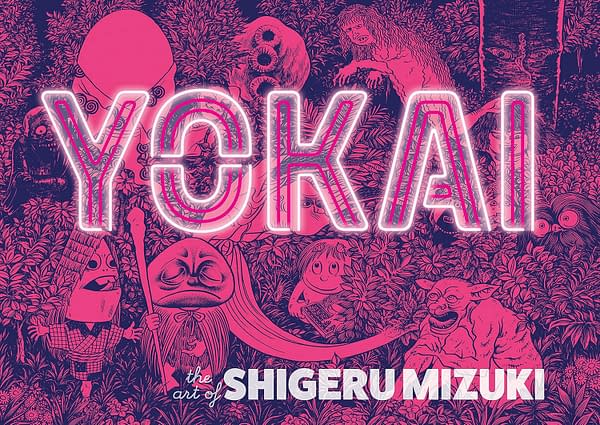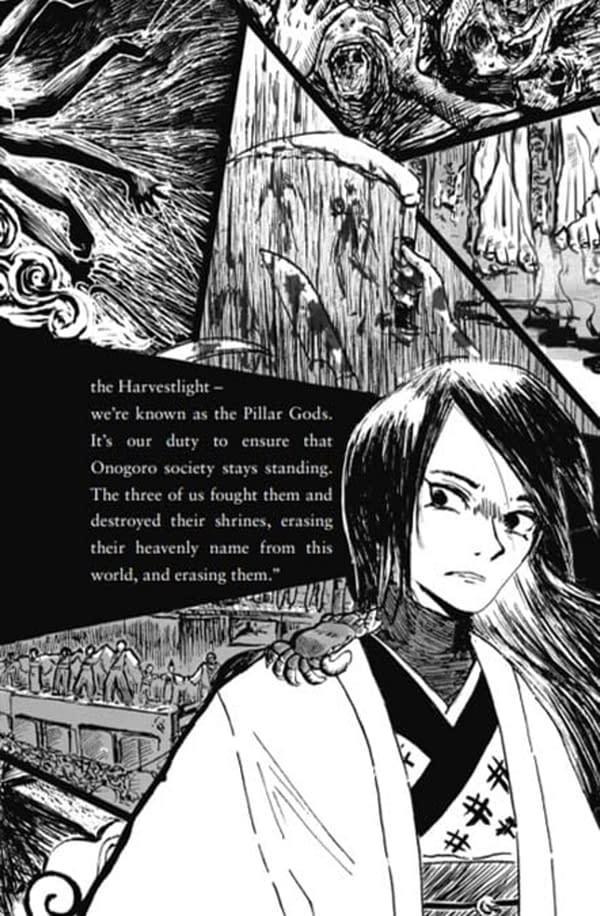Posted in: Books, Comics, Manga, Pop Culture | Tagged: chris riddell, fantasy, Gegege no Kitaro, Hyo the Hellmaker, Japanese folklore, manga, Mina Ikemoto Ghosh, Scholastic Press, Supernatural, Young adult fiction
Author-Artist Mina Ikemoto Ghosh talks about the inspirations behind her unique and Brilliant fantasy novel Hyo the Hellmaker
Japanese-British author and illustrator Mina Ikemoto Ghosh has written a stunningly illustrated, high-fantasy debut novel with Hyo the Hellmaker. It is the most unique new book in the Asian-flavoured Western fantasy novel world, with a unique antiheroine at its centre. Meet the Hakai Family Hellmakers are purveyors of artisan hells and unlucky days to inflict on your enemies. They’ll make it personal… for a price! Hyo Hakai is the latest in her family business, hired to create customized hells and unlucky days for your worst enemies. When a demon destroys her village, Hyo and her brother flee to Onogoro, an island where the gods of their land live among humans. The hellmakers’ family curse forces Hyo to investigate the deaths that come her way and avenge them. As she’s pulled deeper into a tangled web of dark secrets, Hyo must suss out the intricate rules of Onogoro’s gods without becoming their pawn and learns that murderers and gods have one thing in common ― they always think they can get away with it… But Hyo won’t be having that. We got the chance to interview Mina Ikemoto Ghosh about her unique creation.

On the Origins of Hyo the Hellmaker
Hi Mina, congratulations on your debut. Hyo the Hellmaker is one of the most original new fantasy novels from an East Asian perspective. It’s a refreshing change from princesses, romance, and kingdoms at war. The themes of Hyo the Hellmaker involve morality, Karma, and the balance of Order and Chaos over the usual Good vs. Evil conflict. Hyo is an interesting antiheroine driven by a family curse and her work is part of that tradition in Japanese supernatural fiction. Let’s start with a simple question: what inspired you to write this novel and this character?
Thank you so much for the congratulations! It’s a real, wild joy to get to share Hyo and Hyo’s world with you all. I guess you could say that the impetus for writing this novel came from two sources. One, I always wanted to write an offbeat ‘detective’ novel where I could play with murder mystery elements through fantasy. Two, believe it or not, I started writing this whole story as a rom-com on a bet with a friend that I couldn’t do it, the com element being that a murder mystery story would keep disrupting the rom! It didn’t work out.
As for Hyo, I wanted a character who had a background that would lean into Japanese fantasy elements taken from a feminine cultural perspective, hence using the Ushi no Koku Mairi curse ritual, which is often associated with vengeful women, as a base motif for her powers. I was also wanted a character who would stand alongside someone’s darkness, recognising it without moral judgment. She was meant to be the friend to the little soul of destruction in us all, who could see it and help it by channelling its power constructively.


The novel isn’t set in Japan per se, but a fantasy world that’s a version of ancient Japan full of demons and spirits drawing on Japanese folklore. Can you talk a bit about how you set about creating this fantasy world transposed from Japan and the way it’s intertwined with Hyo’s journey?
I knew I wanted to challenge that modernity should necessarily equate to Westernised, so I mixed mostly Edo period ‘Edo the metropolis’ cultural details (so what most would recognize as ‘typically pre-Meiji Japanese’) with really blatant futuristic technology because I wanted this to be Onogoro’s version of its 21st century. I had this sense that if I averaged 1750 (Edo) with 2300 (arbitrarily chosen future-ish number), it came out to 2025, i.e., present-day, as I was writing back in 2020! The beauty of not doing straight Edo was that I could pick and choose how much of Edo culture to use. The hairstyles definitely aren’t Edo!
So how this fits with Hyo’s journey: an Edo-derived backdrop meant it felt natural to include Onogoro’s version of kabuki, as kabuki and the Edo period tend to go hand in hand. Onogoro technology’s focus on wind, solar, or water for power made sense for an island where Shinto-type gods, often forces of nature or natural entities, lived side by side with humans. I thought a lot about human relationships with nature, and how the same power of a river that drove a water wheel could crush crops and kill. At Shinto shrines, you can sometimes see separate altars for the aramitama (the wild, destructive face or soul facet) and the nigimitama (the peaceful face or spirit facet) of a god, and it’s a kind of recognition that multiple sides of the god have to be lived with too in order to live with a god at all. It all fed into ideas of Hyo being a character who lived with her curse and was a kind but dark neighbour.
On British and Japanese Literary Influences
As someone brought up in England, your voice in the novel has a kind of British perspective on top of the Japanese point of view (it reads like a very good English translation of a Japanese text). It has a more analytical and literary view of the characters and the action. Are there any Western and Japanese writers or voices that informed your writing on top of your cultural and anthropological background?
I read my way through Terry Pratchett‘s Discworld series through my teens. I love them, especially the Vimes books. They’re funny and fiercely caring, and the worldbuilding just feels so stinkingly lived in. There’s possibly a fingerprint of Discworld in the high threshold for absurd on Onogoro? Aoyama Gosho‘s Detective Conan probably had some influence on the writing. I very likely picked up how I think about murder mystery story formula and how to break it or play with it from its 106 volumes. I definitely owe a lot to fictional detectives like Holmes and Poirot. I read a fair bit of Higashino Keigo over the years, especially the Detective Galileo series, where a physicist cracks supposedly supernatural or improbable cases, and Yumemakura Baku‘s Onmyoji series, where a diviner and a nobleman fill the Holmes and Watson roles. Otherwise, Fullmetal Alchemist by Arakawa Hiromu is always at the back of my mind. It’s written with so much heart.
The Influence of Manga and Classic Japanese Illustrations on Her Artwork
Let’s talk a bit about the illustrations. Your ink-and-brush illustrations throughout the novel recall both an older style of manga from the 1960s and 1970s as well as traditional Japanese art. Were you influenced by art, anime, and manga when you were learning Art?


You’re the first to ask me about older manga! My mum grew up with Gegege no Kitaro and introduced me to it, and I’ve got Mizuki Shigeru‘s Youkai Encyclopaedia on my nightstand. It’s illustrated, and I’ve taken many a good look at the mark-making in the backgrounds and textures. I’ve been drawing as long as I can remember, so I learnt a lot via osmosis and not especially deliberately. Anime/manga happened to be a constant because my grandparents would send them over for Japanese language practice. I started paying attention to mark-making effects a bit more consciously in my twenties when I went back to Chris Riddell‘s illustrations for the Edge Chronicles then Amano Yoshitaka’s illustrations. Off the back of Mizuki Shigeru, I also looked at a few of Toriyama Sekien‘s youkai-themed woodblock prints. The most useful thing I ever did for my drawing, however, may have been flicking through The Five C’s of Cinematography by Joseph V. Mascelli!


Choosing Which Scenes to Illustrate
How did you select which moments in the story to illustrate? Was your editor involved in the process?
My plan (in the loosest terms) was to draw at least 2 illustrations per chapter and then cross the bridge when we came to it if the page count was too much and illustrations needed to be shed. Not one illustration, however, was dropped. I’m stunned that Scholastic allowed Hyo to become so chunky!
Choosing what to draw was not quite a free choice. Character portraits, for when plot-important characters first appear, were a must, as they help to pin the character in the imagination. I knew that the worldbuilding for Hyo was potentially tricky, so after character introductions, I prioritised illustrations that would be visual aids for the worldbuilding. The next priority was to plot significant dramatic scenes (high movement, high emotion), followed by moments with striking visual detail (unusual costumes), then finally, the moments that allow a little breathing room and some space (quiet).
My art director/designer and an editor put together an initial moments list based off the first draft, but that became obsolete fairly quickly. The final result was almost entirely my selection. 4 or so illustrations were suggested by my art director/designer after the book was laid out, as we needed them to help get text to align with the right illustrations.
A Sequel in the Works
Now that you’ve brought out your first thick saga, what’s next?
The untitled Hyo 2. Every title I’ve come up with has come back with very fair constructive criticism. You’ve all been spared ‘Hyo 2: Electric Hellmaker Boogaloo Vengeance Royale’ and worse. I’ve a first draft for a science fantasy with court intrigue that’s complete but at 0.5 draft level of polished. I’ll be editing that one next after Hyo 2.
Hyo the Hellmaker is published on April 15th and is now available for pre-order.
Stay up-to-date and support the site by following Bleeding Cool on Google News today!



